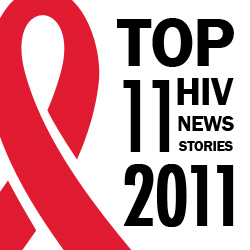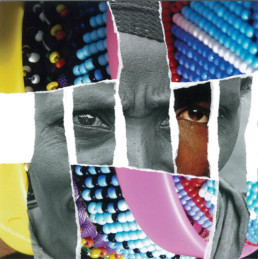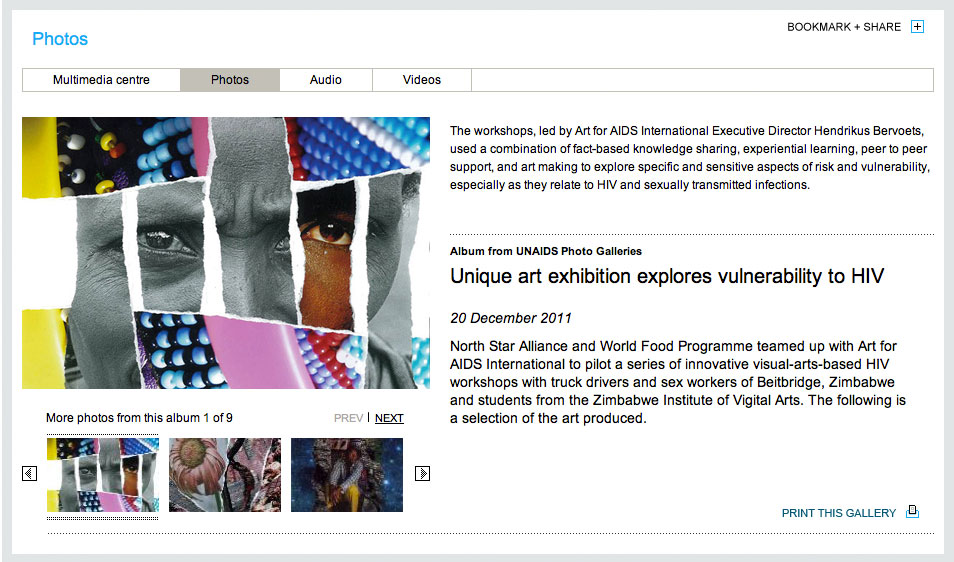Images of Ireland Inspire by Joe Belanger of London Free Press
Pleased to see an encouraging article in the London Free Press today written by local reporter, Joe Belanger. Thanks, Joe, for your kind words.
As seen in London Free Press May 2015
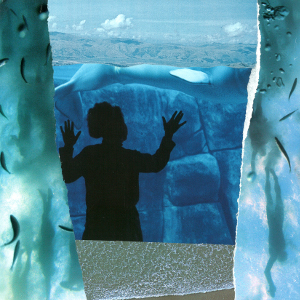
ENTERTAINMENT LOCAL
ON THE CANVAS: South African Secondary School Workshop Exhibit, presented in partnership between Art for AIDS International and University of Johannesburg’s Department of Community Engagement
Artwork sales assist AIDS education
By Joe Belanger, The London Free Press
Monday, May 4, 2015 7:17:40 EDT PM
This work by South African secondary school student Siyanda Kondleka is part of a new exhibition opening in the gallery of Art for AIDS International at One London Place Friday and continuing until May 27.
This work by South African secondary school student Siyanda Kondleka is part of a new exhibition opening in the gallery of Art for AIDS International at One London Place Friday and continuing until May 27.
A London-based aid agency is hosting a new art exhibition of works by South African secondary school students.
Arts for AIDS International’s Hendrikus Bervoets was in South Africa recently to lead an art workshop in collaboration with the University of Johannesburg’s department of community engagement and returned with works that will be sold to help fund the organization’s mandate of educating people about HIV and AIDS.
“This gallery displays the talent of various secondary students, representing works that have been created in a supportive environment as a way for students to contribute, share and express their own personal stories with others in their own communities and beyond,” said Bervoets.
The works are being sold — $30 for unframed works, $80 framed — as a fundraiser for the London-based organization to increase awareness about AIDS.
Art for AIDS International has worked with more than 15,000 young people in 10 countries since 2001 with the goal of educating people about HIV and AIDS through art.
Funds are raised by hosting workshops and selling prints, which allows the organization to continue reaching out to young people around the world.
Art for AIDS International also supports “select initiatives” that6 provide care and support directly to women and children affected by HIV and AIDS in some of the communities hardest hit by the HIV/AIDS epidemic in Africa.
- - -
IF YOU GO
What: South African Secondary School Workshop Exhibit, presented in partnership between Art for AIDS International and University of Johannesburg’s Department of Community Engagement.
Where: One London Place, 2nd floor gallery, 255 Queens Ave.
When: Friday through May 27.
Art for AIDS International Recognized for Community Innovation [VIDEO]
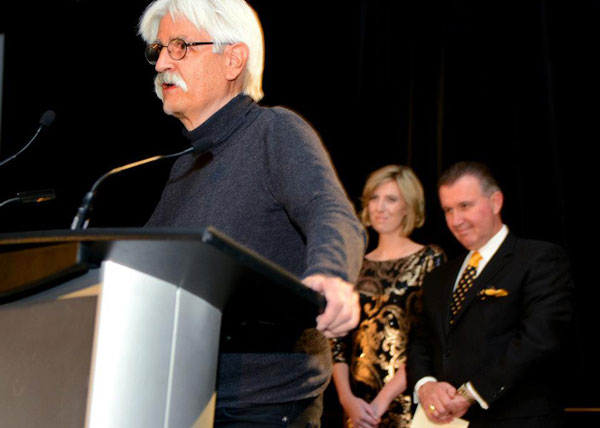
This past week, Art for AIDS International won the Community Innovation Award at the 2012 Pillar Nonprofit Network Community Innovation Awards.
The award, which was presented at the London Convention Centre in front of over 600 community members, was accepted by Art for AIDS Executive Director, Hendrikus Bervoets.
"On behalf of all of us at Art for AIDS, I am humbled and honoured to receive this recognition" said Bervoets. "Our organization grew out of an initiative aimed at encouraging young people in London to take part in the global response to HIV and AIDS. The passion and enthusiasm that these young people, and the broader London community have shown for our work, however, has been a driving force for us to expand beyond our own backyard and into schools and communities around the world."
In addition to Hendrikus' presence at the event, a number of Art for AIDS Board Members were also in attendance.
"I have been a Board member of Art for AIDS for over 5 years and during this time been extremely impressed with the innovative and collaborative nature of the organization which is aimed at providing education, advocacy and support for those affected by HIV and AIDS throughout sub-Saharan Africa. Hendrikus provides passion and energy in every workshop and encounter he has and helped to elevate the issue of HIV and AIDS throughout our community" said Andrew Chunilall, Director of Finance for the London Community Foundation, and Treasurer of the Board of Directors at Art for AIDS International.
All of us at Art for AIDS are honoured to receive the recognition, and would like to thank Pillar Nonprofit Network and the London community for their ongoing support, and for the enthusiasm they've shown for our work.
You can see all the photos from the Community Innovation Awards on the Pillar Nonprofit Network Facebook page. You can also watch the short video presented by Pillar at the ceremony below:
CrowdOutAIDS: A new youth-driven, youth-focused HIV strategy
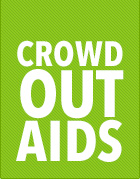 In 2011, the Joint United Nations Programme on HIV/AIDS (UNAIDS) challenged young people from around the world to collaborate and crowdsource the next global HIV strategy. Today, after five months of collaborative efforts, youth leaders from around the world met in Abuju Nigeria to present CrowdOutAIDS to UNAIDS Executive Director Michel Sidibé; a new strategy produced by more than 5000 young people from 79 countries that will guide the UNAIDS Secretariat’s work on HIV and young people through 2015.
In 2011, the Joint United Nations Programme on HIV/AIDS (UNAIDS) challenged young people from around the world to collaborate and crowdsource the next global HIV strategy. Today, after five months of collaborative efforts, youth leaders from around the world met in Abuju Nigeria to present CrowdOutAIDS to UNAIDS Executive Director Michel Sidibé; a new strategy produced by more than 5000 young people from 79 countries that will guide the UNAIDS Secretariat’s work on HIV and young people through 2015.
Leveraging social media and new crowdsourcing technology enabled young people to shape the future of the global response to AIDS, a first in United Nations history. “It brought decision-making to the grassroots, to the skilled and unskilled, learned and unlearned, rich and poor, to contribute to an issue that affects all our lives: HIV," said Nigerian activist Gabriel Adeyemo.
“I am so impressed by the dedication, energy and enthusiasm that young people have shown through the CrowdOutAIDS initiative,” said Mr Sidibé. “The recommendations they have presented to UNAIDS will help us mobilize a new generation of young leaders and we will work together to stop new HIV infections and AIDS-related deaths.”
Globally, its estimated that five million young people (15-24 years of age) are living with HIV. About 3000 young people are newly infected with HIV each day. According to recent surveys in low- and middle-income countries, only 24% of young women and 36% of young men responded correctly when asked questions on HIV prevention and transmission.
Through CrowdOutAIDS, young people proposed six key recommendations for the UNAIDS Secretariat:
- Strengthen young people’s skills for effective leadership at all levels of the AIDS response;
- Ensure the full participation of youth in the AIDS response at country, regional, and global levels;
- Improve young people’s access to HIV-related information;
- Diversify and strengthen strategic networks between the UNAIDS Secretariat, youth networks, and other key players;
- Increase the UNAIDS Secretariat’s outreach to both formal and informal networks of young people; and,
- Increase young people’s access to financial support.
“We have worked together, using the simplest tools—each one of us in their own corner of the world—to create spaces of exchange and draft this important document in real-time, public online sessions,” said Zahra Benyahia, a CrowdOutAIDS drafting committee member. “This is not the end. It’s the first step toward revolutionary youth leadership in the AIDS response.”
For more details on CrowdOutAIDS visit http://www.crowdoutaids.org/ or check out UNAIDS' Press Release
Photo Source: CrowdOutAIDS
AIDS in 2011: A Year in Review
2011 was a mixed bag in the global response to AIDS. While exciting medical breakthroughs in treatment and prevention hint at tremendous potential to reduce the transmission of HIV, these were often offset by reduced financial investment, profiteering, and discriminatory national policies. As we enter the 4th decade of HIV, we wanted to take a look back at some of the biggest stories that defined the AIDS response in 2011.
11 Major Stories from 2011
AIDS turns 30

30 years ago, the United States Centers for Disease Control and Prevention (CDC) issued a report outlining five cases of what was believed to be a rare form of pneumonia. In retrospect, this report would be the first official one to outline what is now recognized widely as the HIV epidemic.
Read our special feature on 30 Years of HIV.
ARVs Prevent Infection

On May 12, the results of the HPTN 052 trial indicated that if an HIV-positive person adheres to an effective antiretroviral therapy regimen, the risk of transmitting the virus to their uninfected sexual partner can be reduced by 96 percent.
The story, which made global headlines in May, was recently hailed as the biggest breakthrough of 2011.
Anti-Gay Legislation

In May, Ugandan MPs backing an anti-homosexuality bill, which included a death penalty clause for repeat offenders, said they would move forward with it, despite President Museveni's calls for them to abandon it.
In November, Nigeria's Senate voted to criminalize gay marriage, gay advocacy groups and same-sex public displays of affection.
Contraception and the Risk of HIV
 In October, a seven-country study published in the Lancet showed that women using hormonal shots to prevent pregnancy, such as the contraceptive Depo-provera, increased their risk of contracting HIV, and doubled the chance that they transmit HIV to their partners. This was major news because helping women avoid unwanted pregnancy is an important part of reducing mother-to-child transmission.
In October, a seven-country study published in the Lancet showed that women using hormonal shots to prevent pregnancy, such as the contraceptive Depo-provera, increased their risk of contracting HIV, and doubled the chance that they transmit HIV to their partners. This was major news because helping women avoid unwanted pregnancy is an important part of reducing mother-to-child transmission.
Medicines Patent Pool

In July, the Medicines Patent Pool announced their first agreement with pharmaceutical company - Gilead Sciences - to improve access to HIV and Hepatitis B treatment in developing countries. The Patent Pool was created in 2010 to improve access to HIV medicines by enabling the negotiation of voluntary patent licences to generic pharma companies, enabling them to develop and distribute new formulations.
Generic Anti-Retrovirals under Fire

In March, thousands protested terms in the ongoing free trade agreement between the EU and India, which pushes for tougher intellectual property regulations - threatening the production of generic pharmaceuticals in India, which currently produces the majority of anti-retroviral drugs used in developing countries.
Read more in UNAIDS's Press Statement.
Funding Cuts for HIV
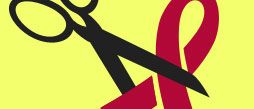
In November, poor funding resulted in the Global Fund's decision to cancel its 11th round of funding. The Global Fund is responsible for about 70% of HIV treatment in developing countries.
Earlier in the year, the Kaiser Family Foundation and UNAIDS released a report showing that funding fell from US$7.6 billion in 2009 to $6.9 billion in 2010 - the first time funding has dropped in more than a decade.
New Targets in Global AIDS Response
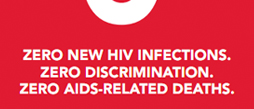 In June, at the UN High Level Meeting on AIDS, a new set of targets was outlined for the global AIDS response. Simply put: "Zero new infections, zero stigma and zero AIDS-related deaths". The meeting concluded with the adoption of a declaration that seeks, by 2015, to double the number of people on ARVs to 15 million, end mother-to-child transmission, halve TB-related deaths in people living with HIV, and increase preventive measures for the "most vulnerable populations".
In June, at the UN High Level Meeting on AIDS, a new set of targets was outlined for the global AIDS response. Simply put: "Zero new infections, zero stigma and zero AIDS-related deaths". The meeting concluded with the adoption of a declaration that seeks, by 2015, to double the number of people on ARVs to 15 million, end mother-to-child transmission, halve TB-related deaths in people living with HIV, and increase preventive measures for the "most vulnerable populations".
Crowdsourcing New HIV Strategy
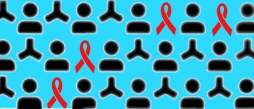
In September, UNAIDS, recognizing the important role of young people in the global AIDS response, launched a digital campaign aimed at encouraging young people to crowdsource a new strategy on HIV and Youth. The campaign, #CrowdOutAIDS, provides platforms for young people to interact and engage with each other regarding issues related to HIV in their community and seeks to reach a collective set of agreements out of these interactions.
More Political Misinformation
 In November, Leader of the Democratic Alliance in South Africa, Helen Zille, called for people who knowingly infected others with HIV to be charged with attempted murder, and quested why the government should pay for people who contracted HIV through "irresponsible behaviour".
In November, Leader of the Democratic Alliance in South Africa, Helen Zille, called for people who knowingly infected others with HIV to be charged with attempted murder, and quested why the government should pay for people who contracted HIV through "irresponsible behaviour".
On August 1st, Uganda's Minister of Health, Christine Ondoa, claimed she knew three people who had been cured of HIV through prayer.
New HIV Vaccine Approved for Trial
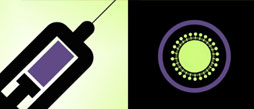
In December, the first and only preventative HIV vaccine based on a genetically modified killed whole virus has received approval by the FDA to start human clinical trials.
Developed at The University of Western Ontario, with the support of Sumagen Canada, the vaccine (SAV001) holds tremendous promise, stimulating strong immune responses in preliminary tests with no adverse effects or safety risks.
As we enter the 4th decade of HIV, there is no better time than now to celebrate success and renew our committment as responsible individuals, volunteers, activists, and sponsors. Reaching Zero New Infections is possible - and we hope it will be at the top of everyone's resolution list this year.
UNAIDS features collaborative Art for AIDS project
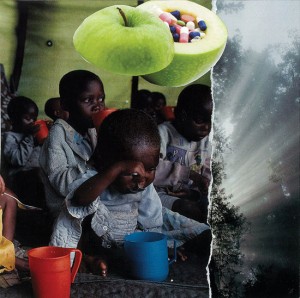 In September we told you about a collaborative pilot project between North Star Alliance, the World Food Programme, and of course, Art for AIDS, focused on extending our arts-based workshops model to truck drivers, sex workers, and students located in both Beit Bridge and Harare, Zimbabwe. While this was by no means our first student-workshop (check out our full list of workshop locations), it was the first time we had hosted workshops with truck drivers and sex workers, two populations that are particularly vulnerable to, and disproportionately affected by HIV, STIs, and other communicable diseases.
In September we told you about a collaborative pilot project between North Star Alliance, the World Food Programme, and of course, Art for AIDS, focused on extending our arts-based workshops model to truck drivers, sex workers, and students located in both Beit Bridge and Harare, Zimbabwe. While this was by no means our first student-workshop (check out our full list of workshop locations), it was the first time we had hosted workshops with truck drivers and sex workers, two populations that are particularly vulnerable to, and disproportionately affected by HIV, STIs, and other communicable diseases.
Following the workshops, all of us at Art for AIDS were excited by both the powerful artwork each participant produced, and by the high quality discussions about HIV that came out of the workshops. Over the past few months, we've been even more excited to watch public enthusiasm for this project grow.
Thanks to tremendous support from both North Star Alliance and the World Food Programme this project was featured with a large exhibition in September at the International Fund for Agricultural Development's (IFAD) Global Knowledge Share Fair, and at the World Food Programme's Head Quarters over World AIDS Day. The project has also been featured at exhibits in London and Toronto, Canada, and in Utrecht, the Netherlands.
This week, UNAIDS (the Joint United Nations Programme on HIV/AIDS) highlighted this initiative as well by posting a special photo gallery showcasing some of the works of art produced along with an explanation of the project. To view this gallery, please click the image below:
We would like to thank UNAIDS for highlighting this feature, and both North Star Alliance and the World Food Programme for the tremendous work they do, and the vision and support they've brought to this initiative.
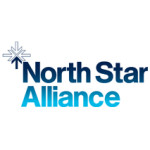
About North Star Alliance
North Star Alliance is a not-for-profit public private partnership that provides healthcare and information to truck drivers, sex workers, and border communities through a network of roadside health clinics across Africa.
You can learn more about North Star by visiting them online or by joining them on Facebook.
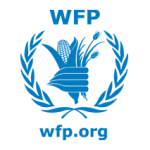
About The World Food Programme
WFP is the food aid arm of the United Nations system, and the largest humanitarian agency fighting hunger.
You can learn more about WFP by visiting them online or by joining them on Facebook.
A Call to Action: 30 Years into the AIDS response

30 years ago, the United States Centers for Disease Control and Prevention (CDC) issued a report outlining five cases of what was believed to be a rare form of pneumonia. In retrospect, this report would be the first official one to outline what is now recognized widely as the HIV epidemic. Unfortunately, what this CDC report could give little indication of was that these five cases foretold the most severe epidemic in modern history. What was equally unpredictable, however, was that the story of AIDS would be one not only of tragedy, but one of resilience, solidarity, and innovation.Read more
Top 10 HIV/AIDS News Stories from 2010: A Year in Review
Sections from this post were originally published online by the humanitarian news and analysis service, IRIN, and PlusNews. To view the original article, please visit PlusNews's article: HIV/AIDS: Top 10 for 2010
This has been an exciting year for the fight against HIV, with dramatic developments in biomedical HIV prevention and a record five million people receiving life-prolonging treatment. It has also been a year fraught with funding difficulties and the continued discrimination against people living with HIV/AIDS and other marginalized groups. Last week PlusNews released the top 10 stories from 2010. While all of us at Art for AIDS have been following these developments closely, it is unlikely that we would have been able to list them so succinctly; thankfully PlusNews has already done a wonderful job. Please read through, comment, and let us know if you feel a story was missed!
Microbicide breakthrough - After years of disappointing results, this year saw the first clinical evidence that a vaginal gel - known as a microbicide - could help to prevent sexual transmission of HIV. Such a preventative tool in the hands of women would radically reduce the level of new infections, analysts say.
ARVs for prevention - A new study found that daily oral pre-exposure prophylaxis (PrEP) - the use of ARVs to prevent HIV in high-risk groups - reduced HIV infection risk among participants who took the ARV Truvada by an average 43.8 percent.
2010 UNAIDS Report and the State of the HIV/AIDS Pandemic

Parts of this post originally appeared on Notes From the Field, a blog written by Art for AIDS International board member JP Bervoets.
This past week UNAIDS released the 2010 Report on the Global AIDS Epidemic. In it, UNAIDS highlights a number of key successes that seem to suggest that the HIV/AIDS pandemic has passed peak infection levels. One statistic in particular has been drawing considerable media attention: New infections have dropped by 20% globally.Read more
Art for AIDS Featured on ArtStash.com
 We would like to thank Sheila Creighton, author of ArtStash.com for writing a wonderful post about Art for AIDS International. Sheila took the time to learn about Art for AIDS International and spend some time with us in our gallery so we thought it only appropriate that we shared her article with you all.
We would like to thank Sheila Creighton, author of ArtStash.com for writing a wonderful post about Art for AIDS International. Sheila took the time to learn about Art for AIDS International and spend some time with us in our gallery so we thought it only appropriate that we shared her article with you all.
Please take a moment to check out Sheila's article by visiting ArtStash.com.




